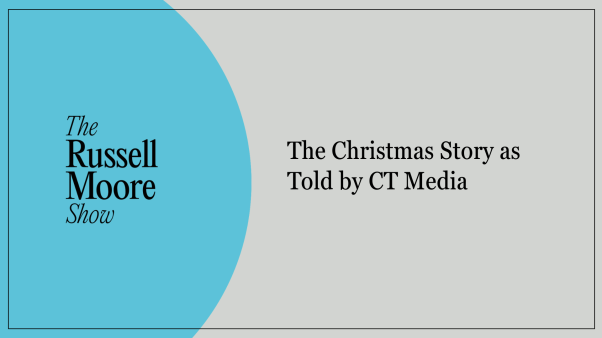When Rick Warren speaks of his “stealth strategy,” one is tempted to grin. Perched on a 120-acre campus in the hills of southern Orange County, California, Saddleback Church and its 15,000 weekly attendees can’t elude anybody’s radar. This is one of America’s largest and best-known churches.
What people know about Saddleback is that it’s seeker-sensitive, big, suburban, and Southern Californian, “which are the very things we care least about,” says Warren, who started the church 22 years ago. Indeed, nobody cares much about them. The seeker-sensitive approach is old stuff, and Saddleback started it years after Willow Creek Community Church, outside Chicago, did. Few congregations wish their pastor preached without tie and socks, as Warren does to match his casual community. And who wants to attend a behemoth? As Warren points out, “The only people who like big churches are pastors.”
Warren doesn’t appear on radio or TV. He rarely speaks outside his church, and avoids politics in both denomination and government. (Saddleback is Southern Baptist, but takes no part in denominational controversies.) Warren has published five books. One is on Bible study methods, written while he was in seminary. Another, The Purpose-Driven Church, contains chapters on such crowd-pleasing topics as sermon preparation and how to organize a class for people joining the church.
All of this means that Saddleback’s profile is big, but not particularly distinctive. To most people, it’s just another megachurch. Only one population definitely pays attention to Saddleback: pastors. Thousands of pastors flock to the church’s annual Purpose-Driven Ministries conference—3,800 in May this year. They made The Purpose-Driven Church a bestseller. Warren apparently has little interest in fame, but he cares about reaching pastors. That’s his stealth strategy. Through pastors he intends to change the world.
Ironically, Warren got his greatest publicity last spring as “the guy who almost messed up pastors’ housing allowances.” That’s the way one minister put it, though it’s not really fair. Warren says he took on a complicated court case to stand up for pastors against arbitrary irs decisions. It was not his fault that a judge used the case to challenge pastors’ special exemptions. (Congress has since passed and President Bush signed a bill reaffirming the clergy’s generous housing exemptions.) In the resulting news stories, Warren’s deduction of $79,999 for his 1995 housing expenses was widely publicized.
That suggested a megapastor defending his luxuries. In reality Warren lives unostentatiously. His home, purchased for $360,000 in an upscale market, is no mansion. He drives an SUV. Colleagues say Rick Warren is generous to a fault, an unpretentious, fun-loving man without boat or beach house. They say he is in private exactly what he seems in public: a Regular Guy.
Warren preaches with the voice of a Regular Guy, making light of his partiality to Krispy Kreme donuts, stuttering a little, stepping on his own lines. In the pulpit or out of it, he drapes a Hawaiian shirt over a shapeless middle-aged body. His personal sense of style, he jokes, is clothes that don’t itch. With the face of a friendly butcher, Warren is to preaching what John Madden is to football. You don’t listen for oratorical skill—though he does have a great sense of comic timing. You listen because he doesn’t seem all that different from you. Pastors who hear him have got to think, I can do that.
Warren says he doesn’t wake up in the night with a detailed vision in his head. He started out 22 years ago, loaded with ideas for Saddleback, but many of them—like building a school and a recreation center—never took shape. He’s needed years of experimentation to develop Saddleback’s approach, which is called, in shorthand, Purpose-Driven. When a pastor says, “We’ve decided to go 100 percent Purpose-Driven,” this means the church has adopted the outline of ministry Warren now teaches at pastors’ training conferences.
If Rick Warren is a Regular-Guy pastor, Purpose-Driven is a regular-church approach—easy to miss because it seems so ordinary. Purpose-Driven is built around five fundamental purposes—fellowship, spiritual maturity, service, evangelism, and worship—which just about any church, large or small, Pentecostal or Episcopal, can get behind. Purpose-Driven has to do with balance: making sure none of the five purposes gets neglected, and that no one of them dominates the church. It’s a broad, middle-of-the-road appeal, yet pastors get excited about it.
At last May’s conference, pastors from all 50 states and 30 countries showed up. They came from all age groups and with all levels of experience. For example, T. L. Garrett, executive pastor of Trinity Church in Lubbock, Texas, came with seven of the sixteen pastors from his 2,000-member church. Garrett is a lean Texan of late middle age, a veteran of many years of ministry. He said his team leaders came intending to “redefine what we are doing for family ministries.”
David Nederhood, a much younger man, is pastor of a Christian Reformed church in Alameda, California. “[My] biggest challenge is to convince people that this really is Reformed.” How does he do that? “It’s pretty hard to argue with the Great Commission and the Great Commandment,” from which Warren’s five purposes are drawn.
Raymond Ng helped launch his two-year-old Chinese language church in Milpitas, California. They adapted some expectations to Chinese culture, he said, but on the whole Purpose-Driven fit. Warren’s how-to book, The Purpose-Driven Church, has been translated into 17 languages and sells well in many developing countries, notably China.
Julio Rosas, pastor of the San Martin de Porres Church in Lima, Peru, said he read The Purpose-Driven Church in 1996 and immediately began translating portions into Spanish. His church has since tripled to 1,500 members and has planted two daughter churches. Rosas was among dozens of church leaders from South America who came to the May conference.
Many pastors told of “going Purpose-Driven” and seeing their congregations grow remarkably. Frank Reynolds, a pastor for 22 years in Manchester, New Hampshire, went Purpose-Driven in 1997 and saw attendance go from 250 to 750. The pastor of a huge Evangelical Free church in Laredo, Texas—launched on Purpose-Driven principles in 1986—described 30 percent growth per year. A pastor who attended the seminar in 1995, feeling discouraged at the time, said he has seen his church increase its staff from two pastors to sixteen.
Small-town Principles
Warren’s own story inspires pastors. He grew up in rural Northern California, son of a Southern Baptist minister who launched and pastored tiny churches. Warren remains a small-town personality, a class president and class clown rolled together. “He’s not sophisticated in any way,” his wife Kay says. “This is a man who will come out in an Elvis costume. He’s a ham. He’s a goofball.”
They met when they were both 16, at a Baptist training meeting for evangelism. “He was imitating Billy Graham at a talent contest,” she says. “He was way too brash, way too loud, way too everything I wasn’t interested in.” At the height of the Jesus movement, Warren helped lead a school revival that got written up in church papers. Skinny, long-haired, aggressively evangelistic, he was invited all over the West Coast to speak on how to build a Christian club at your high school.
While attending California Baptist College in Riverside, Warren directed a youth group at a nearby Baptist church. He talked church leaders into buying $18,000 worth of weightlifting equipment, then used it to build a youth group with 10,000 students on its mailing list. His last year in college, the school administration asked him to help teach a course in evangelism.
Warren chose Fort Worth’s Southwestern Seminary because he wanted exposure to big Southern Baptist churches. Fascinated by size, he wrote to the 100 largest churches in America asking for the secrets of their growth. By then he was married, but he and Kay had “descended into marital hell,” as she puts it. With no money, they nonetheless pursued extensive marriage counseling. Rick jokes that he could make a TV ad: “MasterCard saved my marriage.” His freedom in describing marital difficulties from the pulpit is another part of Warren’s Regular-Guy appeal.
During his last year in seminary, he and Kay drove west to visit Robert Schuller’s Institute for Church Growth. “We had a very stony ride out to the conference,” she says, because such nontraditional ministry scared her to death. Schuller, though, won them over. “He had a profound influence on Rick,” Kay says. “We were captivated by his positive appeal to nonbelievers. I never looked back.”
Big Dreams
Warren says he was offered the pulpit of a 5,000-member Texas church upon graduation from seminary. He had larger plans in mind. In December 1979, he and Kay arrived in Southern California with a U-Haul truck, a baby daughter, no place to stay, and no money. It’s a classic story that Warren loves to tell: how he walked into a real estate office, announced his plight to the agent, and then recruited him as the first member of his new church.
When Warren tells the story, it sounds as though he was the ultimate lonely pioneer. It probably felt that way, but many Southern Baptists closely watched his efforts. Five churches supported him financially, several churches sent volunteers to help canvass neighborhoods, and 15 students visited from Southwestern Seminary to pitch in. California Southern Baptist put the Warrens on its cover after the new church had held only three services. Within a year the national convention’s Mission USA featured Saddleback in a five-page feature article. Southern Baptists knew Warren as a talent, if an unconventional one.
Imitating Schuller, Warren walked the (then unincorporated but fast-growing) town of Lake Forest, asking what kept people from going to church. He recruited a Bible study group that met at the Warrens’ condominium; its members helped stamp and address letters to 15,000 households. “At last!” the letter began. “A new church for those who’ve given up on traditional church services!” More than 200 people showed up for an Easter service at Laguna Hills High School. Watching them stream in, Warren marveled, “This is really going to work!”
His unearthly self-confidence showed at that very first service. To a straggling crowd of strangers, he announced his dream of building a church with 20,000 members, located on 50 acres of land, sending out hundreds of career missionaries, and starting at least one daughter church a year. “I stand before you today and state in confident assurance that these dreams will become reality. Why? Because they are inspired by God!”
Warren aimed to reach unchurched young families in the fast-growing, upscale area. He hit his target, baptizing 13,000 new believers and building a vital church from a crowd that initially felt, he says, like “a Kiwanis Club.” The Saddleback Valley filled up with new, planned communities, bringing a flood of upper middle class arrivals. It was a mobile, consumerist culture that adapted easily to a new approach to church. By emphasizing small groups and recovery, Saddleback connected people in a community that had no community. Warren’s dreams are well on the way to coming true: Today the church, located on 120 acres, has 15,000 members and 15,000 attendees.
That makes it sound easy, but Saddleback did not always do it the easy way. While developing itself, Saddleback has launched more than 30 new churches, the majority composed of Latinos. For years the church worshiped in local high schools, renting a total of 79 different buildings for various Sunday and midweek meetings. (Warren jokes that you could join the church if you could find it; that explains why all its members are so intelligent.) Buying a large piece of property involved years of financial stress, environmental battles, and zoning woes. When the church at last purchased 120 acres, it could afford to put up only a large, modernized tent that lacked heating and cooling. The church had regular weekend attendance of more than 10,000 before it finally built a worship center. Only this year is the Sunday school moving out of portables into a children’s education wing.
Purpose-Driven Principles
Saddleback grew partly because Rick Warren is a very attractive and talented leader, and because the area was ripe for a megachurch. But there is more than that. The foundational concept of Saddleback’s ministry, its organizational and theological architecture, is Purpose-Driven. Southern Orange County and Rick Warren cannot be duplicated; but Warren believes, and many agree, that Purpose-Driven can be.
“What pastors say when they hear the Purpose-Driven principles is, ‘It makes sense. I could have written this book,’ ” says Tom Holladay, one of Saddleback’s longtime pastors. Another pastor, Doug Slaybaugh, gave me his version of the universal reaction: “You know, that really is what I believed.”
They probably did. Purpose-Driven principles are best explained with two diagrams you can scribble on a napkin. One is the baseball diamond, used to explain the flow of church ministry in a person’s life. Vast crowds attend church, but they reach first base, Membership, only by completing Class 101 and signing a covenant of commitment to Christ and the church. Second base is Maturity, reached through another class (201) featuring a covenant of commitment to a daily quiet time, tithing, and a small group. Third base is Ministry, in which members commit to serving actively in the church. They are interviewed and placed in one of dozens of thriving church ministries. Home base is Mission, in which Christians commit to the cause of evangelism. At the center of the diamond is Magnification, which stands for worship. How can one reach maturity before committing to mission or ministry? Chalk it up to the Baptist penchant for alliteration. Purpose-Driven churches make worship the starting point—it’s where unchurched people experience the church and decide to commit. It’s also the end, since everything centers on glorifying God.
The basic idea is that every healthy church must balance these purposes, neglecting none. All ministry programs should be organized to serve one of the purposes, with a specific target audience in mind. And different departments must work together, since they expect to “hand off” members as they go around the bases. As Warren often says, “You don’t get credit for people left on base!” That means it’s not enough to baptize new believers or place them on the rolls. It’s not even enough to get them to tithe or to volunteer. Churches need to move members on to maturity, discipleship, service, and mission.
A second diagram, concentric circles, represents target audiences for each of these bases. The widest circle is the Community, targeted by evangelism. The next circle is the Crowd, those who come to church, experience the seeker-sensitive worship service, and may be attracted to Christ. The third circle represents the Congregation, those who commit their lives to Jesus and become members of the church through Class 101. Fourth is the Committed—those whose habits suggest that they are becoming genuinely mature in faith. Inmost is the Core, those committed to do the ministry of the church.
Purpose-Driven seminars elaborate on these basic ideas. They give curriculum for classes at each of the bases and suggest a host of ways a church can organize itself around the five purposes. Warren emphasizes, however, that every church is different. He encourages pastors to adapt the material and improve on it as they will. He is delighted when some churches change the baseball diamond into a soccer field or a bridge or a ladder. Pastors, who are not necessarily strategic thinkers, say the simple diagrams help them envision the total ministry of the church. Says Mike Balos of Bells, Tennessee, “You can get more concerned with filling the slots in the Sunday school, rather than asking, ‘Is it effective?’ The purposes take you back to your roots.”
George Rayburn, pastor of a 10-year-old charismatic church in Phoenix, says that his whole idea of church consisted of worship before the Purpose-Driven outline helped him balance worship with evangelism, discipleship, fellowship, and service. For pastor Jimmie Davidson, steeped in Southern Baptist culture, the purposes gave permission to rethink traditional church programs and committees. Asked what Purpose-Driven had added to his church in Abingdon, Virginia, Davidson was too choked up to speak. “It was death to life,” he finally said.
Warren sometimes refers to the purposes as the “Intel chip” of the church. He means that Purpose-Driven principles make an invisible architecture that churches can build on in a variety of ways. A Purpose-Driven church may worship with techno music, or it may use an organ and 18th-century hymns. Its theology may be Pentecostal or dispensationalist. Warren enjoys telling how Purpose-Driven reached Brazil and spread to illiterate congregations meeting in houseboats on the Amazon River. He acknowledges that much of Saddleback’s ministry builds on the peculiar culture of Southern California. But he believes the purposes are completely biblical and thus transferable anywhere.
Purpose-Driven may be compared to the Rule of Benedict, an organizational structure grafted onto monasteries all over Europe and the Mediterranean in the 6th century. The Rule enabled monasteries to thrive through the fall of the Roman Empire and beyond. Or to use a slightly more modern example, John Wesley’s organization of believers into small groups, and his program of itinerancy for preachers, set the stage for the dramatic spread of Methodism. “John Wesley was not so much an innovator,” writes historian Mark Noll, “as a gifted organizer who creatively exploited other people’s new ideas.”
Marshall Shelley, executive editor of Leadership Journal, sums up Purpose-Driven as a “theology and system of postconversion life.” Seeker models pay attention to the unchurched mindset, but Purpose-Driven takes up evangelism, discipleship, fellowship, service, and worship—all emphasized separately by various authors and movements—and systematically integrates them into the life of the church.
Southern Baptist Core
Critics say that seeker-sensitive megachurches draw their approach from business rather than the Bible. “The megachurch movement’s uncritical use of the tools of modernity is. … a Faustian compact,” writes John Seel in The Evangelical Forfeit, “that could one day require the evangelical soul.”
It’s a fair warning, but Purpose-Driven principles seem less a result of a business-saturated mind than a Baptist-saturated mind. Warren has dropped much of Southern Baptist culture—the altar calls, the Broadman hymnal, the Sunday school. Yet Warren’s imperatives come straight from the heart of the Baptist way. He cares about the Bible. (It’s a point of pride that his new book, The Purpose-Driven Life, cites over 1,000 verses of Scripture.) He cares about world missions, pouring money into making Purpose-Driven resources available in the Third World. And most of all he cares about soul-winning. Though Warren’s diamond balances evangelism with the other purposes of the church, it’s clear where his heart goes. “He lives, bleeds, sleeps, and eats evangelism,” says Kay Warren.
If Purpose-Driven falls short, it’s in its Southern Baptist mentality. Southern Baptists are highly organizational, and Purpose-Driven is an organizational and programmatic approach. For example, the diamond offers a sequence of church involvement, even though spiritual development is rarely so neatly sequential. Nor do circles and diamonds tell you how to help someone who is spiritually stuck. Purpose-Driven isn’t really pastoral so much as it’s institutional. But, then, pastors lead institutions, and for many that’s the least comfortable and most demanding part of their job.
Warren palpably loves leading a congregation. He’s turned down powerful jobs in Southern Baptist institutions and in parachurch organizations because he can’t imagine wielding influence that’s primarily organizational and not congregational. One reason he doesn’t do TV or radio is that such ministries take on a life of their own, overshadowing the life of the congregation. “The spotlight blinds you,” he says. Warren loves trading ideas with his staff. He’s such an idea person that he depends utterly on such long-term pastors as Glen Kreun—who joined Saddleback in its infancy—to work out the details of his visions.
Warren says we have entered a congregational era, noting that denominations have waned. Neither do evangelical parachurch ministries of the post-World War II era any longer form the edge of innovation. “Today, the sharpest guys I know are starting churches,” Warren says. He pictures Saddleback as a “teaching church,” with a responsibility to pass on its lessons to other churches. “We’ve trained more pastors than all the seminaries combined,” he says.
Even though the statement is hyperbolic—Purpose-Driven conferences last a few days, while seminary training goes for years—it’s still notable. More than 180,000 pastors worldwide have been introduced to the formula, according to Warren’s website. Many of them encouraged members of their congregations to participate in “40 Days of Purpose”—a collective journey through Warren’s latest book, The Purpose-Driven Life (Zondervan)—this fall. As of September, more than 500,000 people in more than 1,500 churches were intending to do it, according to Saddleback.
“I’m a toolmaker,” Warren says. “I believe that tools change the world. When Bill Bright [founder of Campus Crusade for Christ] dies, Bill Bright is going to leave the Four Spiritual Laws, Ten Transferable Concepts, and the Jesus film. That’s pretty good work. When Dawson Trotman [founder of Navigators] died, he left the hand and the wheel. When Rick Warren dies, he’s going to leave the circles and the diamond.”
Even Warren’s Sunday-morning sermons are like training seminars. He uses printed outlines and asks his audiences to fill in blanks, read Scripture passages out loud together, and circle important words. His style is pitched toward simplicity, based on his confidence that the material doesn’t require rhetorical flourishes so much as it needs to be thoroughly understood. It’s not just knowledge he’s passing on. It’s knowledge to change your life. It’s knowledge to change the world.
That’s the stealth. Warren’s target audience of pastors hardly appears on the list of powerful influences in the 21st century. A couple of diagrams, so simple that people say, “I already knew that,” appear unlikely to transform the world. But Rick Warren believes in pastors, he believes in churches, and he believes that those simple diagrams are God’s, not his. He is delighted that a church member somewhere in China may know the diamond, may know the purposes, and not know the names Saddleback or Rick Warren.
Tim Stafford is a senior writer for CT.
Copyright © 2002 Christianity Today. Click for reprint information.
Related Elsewhere
A ready-to-download Bible Study on this article is available at ChristianBibleStudies.com. These unique Bible studies use articles from current issues of Christianity Today to prompt thought-provoking discussions in adult Sunday school classes or small groups.
A downloadable Bible study based on this article is available at CurrentIssuesBibleStudy.com. These unique Bible studies use articles from current issues of Christianity Today to prompt thought-provoking discussions in adult Sunday school classes or small groups.
The official site of Saddleback Church is huge and includes an opening video by Warren on finding God’s purpose for your life.
On Pastors.com, Rick Warren does a free newsletter, Ministry ToolBox, to aid those in ministry grow healthy churches. Warren’s books are available at Christianbook.com.
The Purpose Driven Ministries website has information on the organization, conferences, and support materials.
Articles in Christianity Today sister publication Leadership Journal about Rick Warren or Saddleback include:
Shadowing Tiger WoodsHow can I pastor when I feel inferior to the great ones? (Spring 2001)
Best Titles for SermonsCalvin Miller and Rick Warren on how to select a great name for a great message. (Winter 1998)
Comprehensive Health PlanTo lead a healthy church takes more than technique. An interview with Rick Warren. (Summer 1997)
Christianity Today article on the Saddleback tax exemption case include:
Christian History Corner: Of Church, State, and TaxesIf you want to know what the establishment of religion looks like, check out church history, not American tax law. (May 17, 2002)
Parsonage in PerilCongress protects tax exemption. (May 13, 2002)
Give Us a [Tax] BreakIt is the state’s business to discourage what hurts the community and encourage what builds it up. (May 13, 2002)
Comments in the March 5 Ninth Circuit Court of Appeals ruling are available in PDF form.
The Clergy Housing Allowance Clarification (H.R. 4156) amends the Internal Revenue Code of 1986 to clarify that the parsonage allowance exclusion is limited to the fair rental value of the property.










